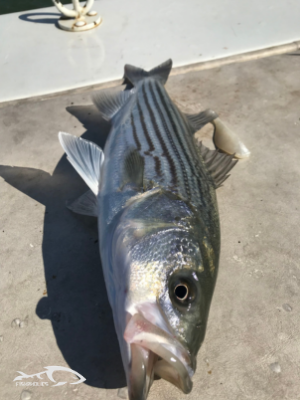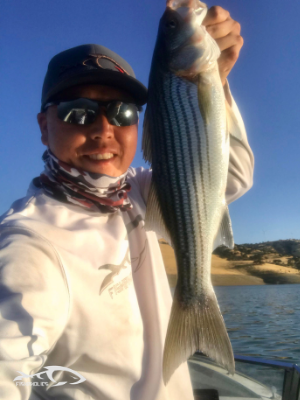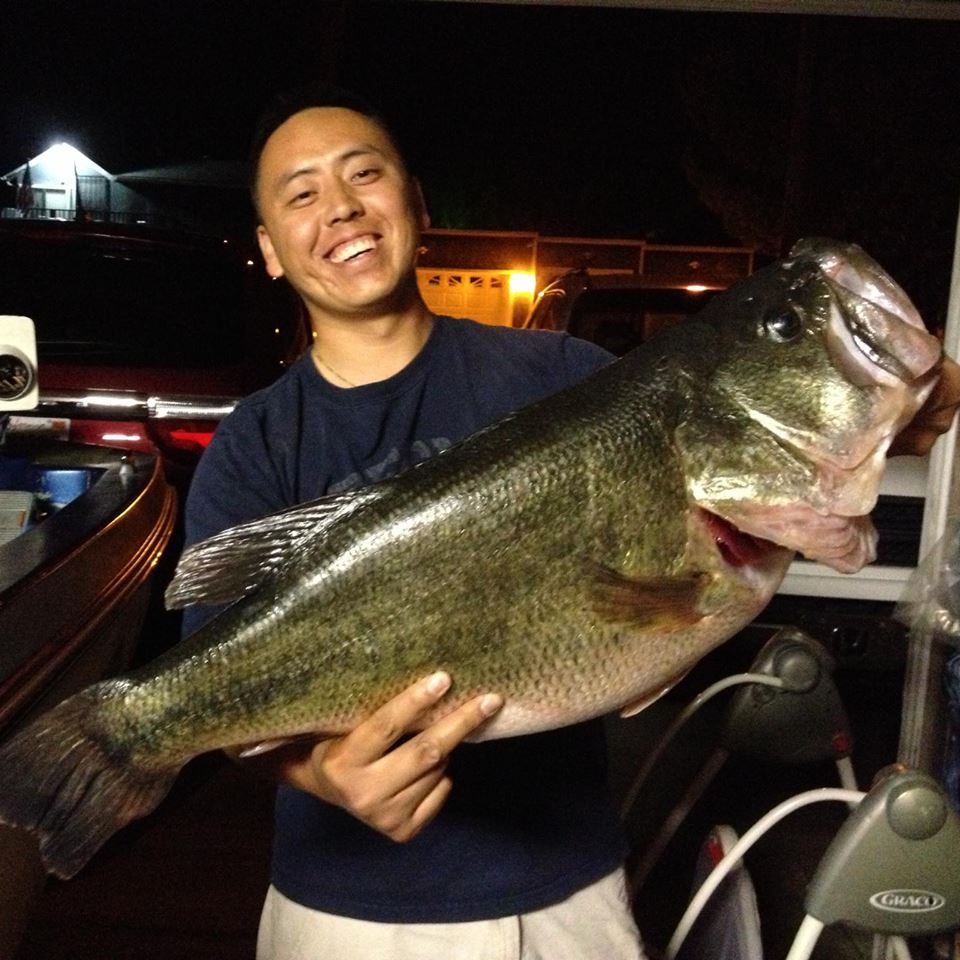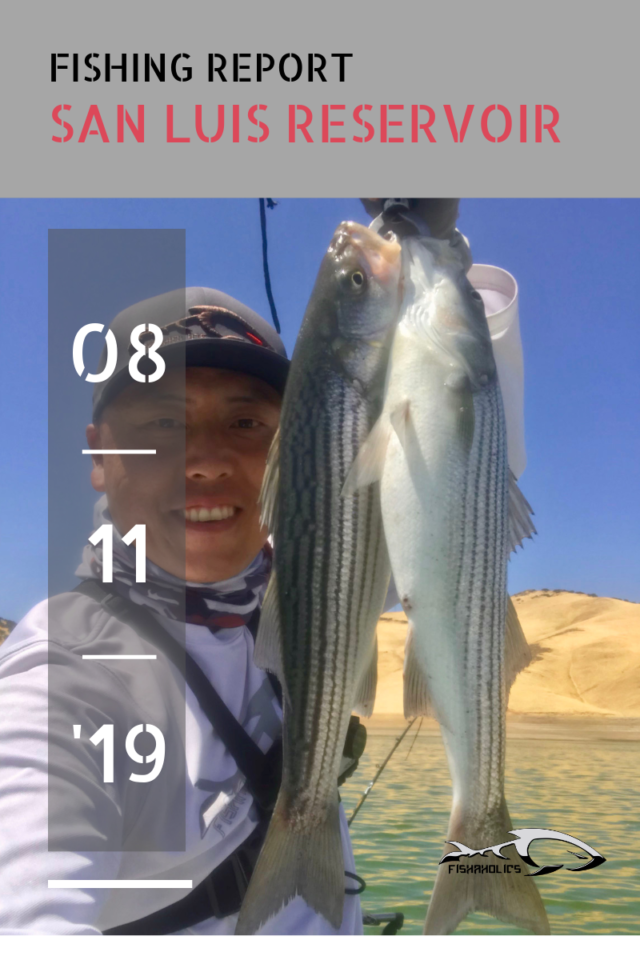
Fishing Report: San Luis Reservoir August 11, 2019
San Luis Reservoir can be an intimidating lake to fish. It’s full of peaks and valleys, deep channels and fluctuating water levels. The pattern changes daily and even hourly. Sometimes you only have a small window of opportunity before they stop biting.
So what do you do if you haven’t fished the lake over an extended period of time?
Well, yesterdays trip I did just that. It’s been several weeks since I last fished San Luis Reservoir. With the recent death of my mother in law, broken steering cable on my boat and the every day grind with the kids, I haven’t been able to find the time to hit up San Luis Reservoir.
So, with my mind cluttered with life’s problems, I headed out to the big lake to clear my head. This time of year the wind can be unpredictable. The park will close down the lake to boating if it gets too choppy. Luckily when I got there, the wind was tolerable and they allowed boaters to launch.
I launched out of the Basalt boat ramp. But with the water receding daily, mud had built up so much on the boat ramp that even the 4×4 vehicles couldn’t launch. So, it was off to the Dinosaur Point boat launch on the other side of the lake.
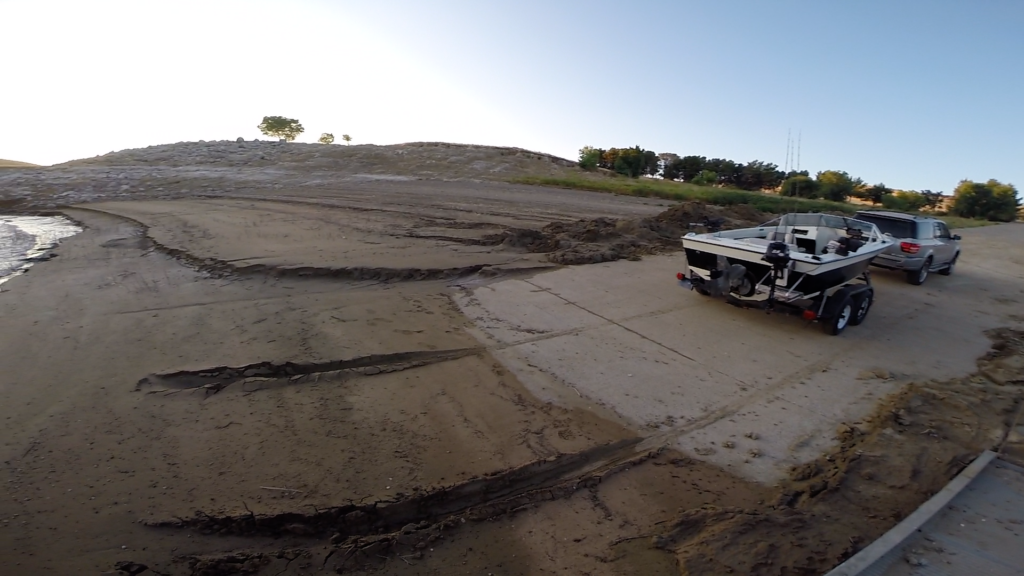
By the time I got the boat on the water it was already 8am. Late by my standards. I had no clue what the bite was going to be like. I just went off what worked for me last time. Last time, they were biting off the submerged islands on the west side of the lake.
On the way there, I decided to troll the Tackle Builders Atlas Rigs in a cove. I spotted quite a few striped bass in the area but only landed one striper. After no more takers, I decided to hit the submerged islands.
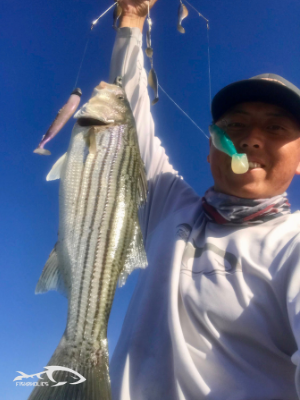
It was loaded with fish but they weren’t stacked up in dense schools like the past few trips. They were scattered along the bottom and a lot of them were short striking the Atlas Rig.
I prepared some stinger hooks for moments like this. Unfortunately I forgot to bring them that morning. Stinger hooks are used when you want to add an extra hook, usually a treble hook attached to the main hook near the tail of the swimbait. Most fishermen use this hook when the fish are biting near the tail end of your bait.
The stripers I was catching were barely hooked. They weren’t that hungry. It was a reaction bite. I could see them in 30’-40’ of water. They were hitting the white Atlas Rig more than the other colors.
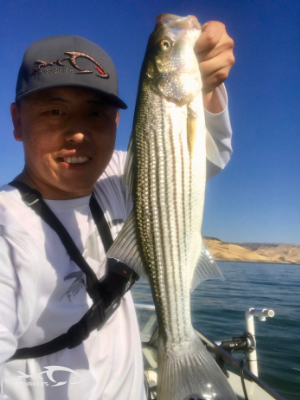
After catching a few stripers there, I decided to hit Lone Oak bay after the bite slowed. Lone Oak was loaded with fish but like the previous location, they were short striking. They were even less aggressive. I didn’t catch many fish there but I did spot a few bigger schools roaming around in open water.
In the afternoon, I went over to the Basalt area by Fisherman’s Point to give that location a try. The water surface was thick with green algae as far as the eye can see. The striped bass were shallower here too.
I caught a few stripers in the 30’ depth trolling the Atlas Rig about 5’ off the bottom. Then as if a light switch was flicked off, the bite was dead for the next few hours.
Every location I tried yielded nothing. Even places I caught fish earlier in the day. It wasn’t until mid afternoon that I began hooking up again. I was targeting shallower waters. 30’ depth was the magic number. My best results were near coves and main lake points.
Some areas were loaded with stripers. I even found a few thick schools bundled up together. Those I usually hooked up when I trolled over them.
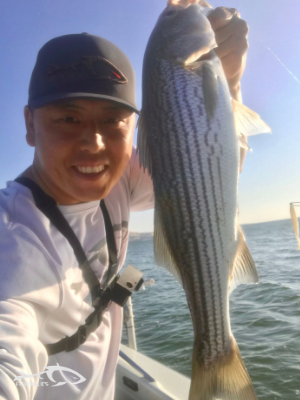
Most of the time these stripers were scattered hugging very close to the bottom. They were so close to the bottom, you couldn’t even make them out on the traditional 2D sonar.
I had to use the Garmin Livescope to spot them. They’d show up as solid oval shapes bouncing around off the bottom.
It was tough getting a bite. I had to create action on the Atlas Rig that they started biting. I would slow down the boat then speed up again. When stripers gave chase. This little slow down was all it took to get a bite.
Other times I shook the rod, pull the rod forward or let line out to create that change in action. Most of the bites came right after I introduce that change in action.
It certainly wasn’t easy fishing but I busted out every trick in the book and that made all the difference. I can’t tell you how much I rely on the Garmin Panoptix Livescope now. It’s definitely been a game changer for me.
The ability to search ahead of the boat for schools of striper so you can turn in that direction is so useful. I use the Panoptix Livescope a lot for trolling. It helps me react to a fish in real time. I can see fish giving chase and know if I should add a stinger hook, change colors, bait sizes, etc.
I ended the day with 30+ fish to 24”. Not a bad trip considering these striped bass weren’t very active. San Luis Reservoir is by no means an easy lake to fish. To stay consistent fishing at San Luis Reservoir, you have to keep moving.
Quick recap. White Atlas Rig was the go to color. Coves and main lake points were key locations. 30’ was the magic depth.
Now you know. Go get em!

